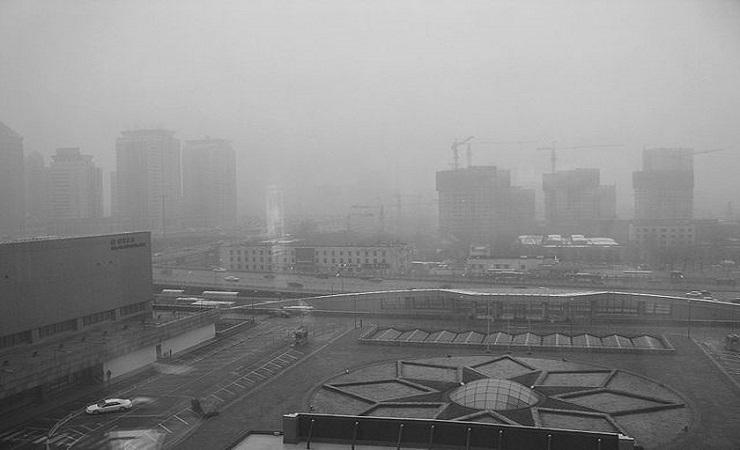ASIACALLING
China, world’s largest carbon emitter prepares carbon trading platform
"As the world’s largest emitter of carbon dioxide, China got a lot of credit for signing up to the Paris Accord on climate change. Now it has to deliver on its pledges."
Mark Godfrey

As the world’s largest emitter of carbon dioxide, China got a lot of credit for signing up to the Paris accord on climate change.
Now it has to deliver on its pledges, one of which is to establish a national carbon emissions trading platform this year.
But the country is also seeking to avoid some of the problems of the trading system first set up by the European Union (EU).
Mark Godfrey has the story.
The Beijing Environmental Exchange is one of several pilot exchanges set up across China to trade emissions certificates, which companies earn for reducing their carbon output.
The Chinese pilot exchanges have been closely watched by Aki Kachi, international policy director at Carbon Market Watch, an international research body.
He explained how it started, “We have had an expansion of countries opting for variations of cap and trade systems. You had the first system in Europe then New Zealand, now also California, Quebec, Tokyo have all started systems.”
More recently, Aki Kachi says, South Korea and China have established pilot programs. In China, they will eventually be turned into a national system.
The exchanges are part of a system where countries cap the amount of carbon that companies can emit, and then they trade those carbon emissions. It’s called carbon trading.
It allows countries that have higher carbon emissions to purchase the the right to release more carbon into the atmosphere, from countries that have lower carbon emissions.
The Paris deal on climate change signed by heads of state late last year made exchanges, like those being trialed in Beijing, one way to reduce greenhouse gases.
“Paris was important because it sent a more long-term signal to government and industry that carbon markets as a viable mitigation tool does have a future,” says Dr Luke Redmond, one of the EU negotiators in Paris.
Yet not all developing countries agree with the market model.
“A lot of developing countries feel that they should be allowed to develop their economies and get funds from the developed world, which they see as having caused the problem. They see carbon markets as a buyout or an escape mechanism for the developed world,” Dr Redmond continued.
But getting China, the world’s leading source of emissions, signed up means the cap and trade system will be central to climate change solutions.
A long-time advisor to China is Andrei Marcu who is the founder of the International Emissions Trading Association. It promotes the voice of carbon markets and trading.
He says it’s in the interests of China to get on board.
“China is a great power but it is also part of the global community of business and can’t disregard what everyone is doing and as its trading partners are setting up carbon markets, like South Korea or the US or the EU,” Marcu stated.
“In order to be able to show a level playing field as an exporter and a trading nation, China will need to be able to show comparable efforts, and the most simplest way of doing that is through a carbon price.”
And yet even though China has signed up to the emissions trading approach there are huge problems getting it to work.
The biggest challenge is carbon prices have to be high enough to justify companies making the investments needed to reduce their emissions.
In the EU an oversupply of carbon emission permits has collapsed prices which means there’s less incentive to cut emissions.
“You had an economic crisis and you had economic decline, which led to a reduction in emissions and with the set amount of emissions allowances and less demand, the prices fell,” according to Aki Kachi.
“So we have an excess of allowance and little demand and the price no longer provides a real incentive to reduce emissions. It’s very hard to predict economic growth over a period of time and so more systems are coming up with ways to address oversupply.”
While China needs to learn from Europe’s mistakes the success of its emissions trading system could be central to the whole carbon trading model as a means of reducing greenhouse gases.
“I think the jury is still out, the pilots have had mixed success,” Aki Kachi told me.
He continued, “China is by far the biggest emitter of greenhouse gas. If China can make it work it will be a pioneer, a role model for other developing countries.”
Dr Luke Redmond thinks China deserves some credit for efforts thus far.
“It’s encouraging that China government ran with idea of establishing such an ambitious trading scheme. China is such as big emitter. In the negotiations it is sometimes accused of being not ambitious, but domestically China’s policy makers have been very ambitious through their pilot schemes with the goal for a national scheme,” Dr Redmond commented.
“From a global carbon market scheme perspective it’s very encouraging. The hope is China can learn from Europe and come up with the most efficient emissions trading system we’ve seen so far.”
As China prepares to open its national carbon trading exchange this summer all eyes will be on the world’s leading emitter of carbon to see if it can make the system work.
- Mark Godfrey
- Climate change
- Carbon emissions trading
- China
- Paris Accord
Komentar (0)
KBR percaya pembaca situs ini adalah orang-orang yang cerdas dan terpelajar. Karena itu mari kita gunakan kata-kata yang santun di dalam kolom komentar ini. Kalimat yang sopan, menjauhi prasangka SARA (suku, agama, ras dan antargolongan), pasti akan lebih didengar. Yuk, kita praktikkan!